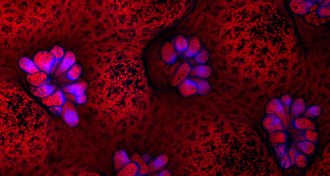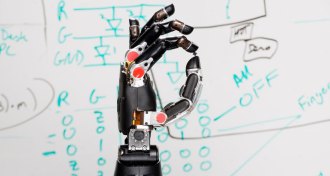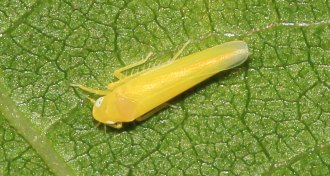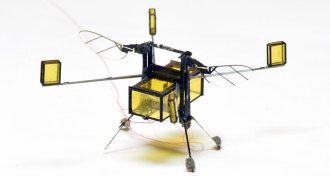Tech
Sign up for our newsletter
We summarize the week's scientific breakthroughs every Thursday.
-
 Materials Science
Materials ScienceThis material does weird things under pressure
A new metamaterial has a seemingly impossible property: It swells when squeezed.
-
 Animals
AnimalsFluorescence could help diagnose sick corals
Diseased corals fluoresce less than healthy corals, and a new analysis technique can help spot the reduced glow.
-
 Tech
Tech50 years ago, artificial limbs weren’t nearly as responsive
Artificial limbs have come a long way since 1967.
-
 Science & Society
Science & SocietyReaders inspired by SN 10 scientists’ research
Readers wanted to know more about the scientists' research who were profiled in "The SN 10: Scientists to watch."
-
 Quantum Physics
Quantum PhysicsQuantum computing steps forward with 50-qubit prototype
Bit by qubit, scientists are edging closer to the realm where quantum computers will reign supreme.
-
 Quantum Physics
Quantum PhysicsQuantum computers take a step forward with a 50-qubit prototype
Race to build ever-more-powerful processors edges the technology closer to being able to best traditional machines.
-
 Health & Medicine
Health & MedicineArtificial insulin-releasing cells may make it easier to manage diabetes
Synthetic cells crafted in the lab could provide a more precise, longer-lasting diabetes treatment.
-
 Animals
AnimalsLeafhoppers use tiny light-absorbing balls to conceal their eggs
Leafhoppers produce microscopic balls that absorb light rather than reflect it and help camouflage the insects’ eggs.
-
 Archaeology
ArchaeologyMystery void is discovered in the Great Pyramid of Giza
High-energy particle imaging helps scientists peek inside one of the world’s oldest, largest monuments.
-
 Materials Science
Materials ScienceNobel Prize–winning technique illuminates the fibers that set off battery fires
Scientists get a closer look at the filaments that ruin lithium-ion batteries from the inside out.
-
 Tech
TechThis is the lightest robot that can fly, swim and take off from water
Lightweight, insect-inspired robot can swim, fly and leap from the surface of water.
-
 Health & Medicine
Health & MedicineRobotic docs can boost surgery time and cost
Robots in the OR may not be worth the extra time or money for all procedures.